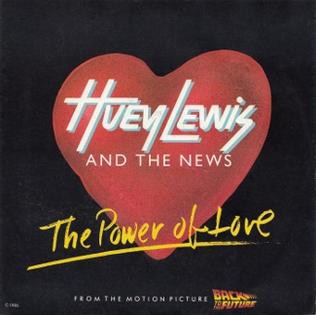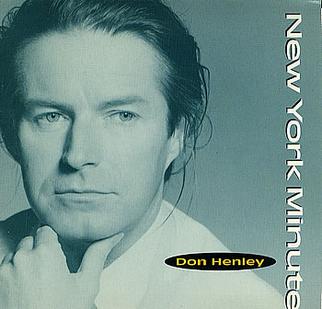 There are rock songs, and then there are declarations of immortality disguised as rock songs. “Back in Black” by AC/DC isn’t just a powerful track—it’s a seismic event in the annals of hard rock history. Released in 1980 on the band’s first album after the tragic death of frontman Bon Scott, it stands as both a tribute and a rebirth. It’s a sonic monument, a blast of riff-heavy defiance that manages to both honor the past and shred forward into the future with unstoppable swagger.
There are rock songs, and then there are declarations of immortality disguised as rock songs. “Back in Black” by AC/DC isn’t just a powerful track—it’s a seismic event in the annals of hard rock history. Released in 1980 on the band’s first album after the tragic death of frontman Bon Scott, it stands as both a tribute and a rebirth. It’s a sonic monument, a blast of riff-heavy defiance that manages to both honor the past and shred forward into the future with unstoppable swagger.
The story of “Back in Black” begins with loss. Bon Scott, the charismatic and gritty voice of AC/DC’s early success, died in February 1980 after a night of heavy drinking. The band, understandably devastated, considered disbanding. But they didn’t. Instead, they regrouped, grieved through creation, and decided to record an album that would serve as both a tribute to Scott’s memory and a statement that the band’s spirit was unbroken. They hired British singer Brian Johnson, whose howling, sandpaper vocals seemed not only to match Scott’s intensity but to propel the band into a new, uncharted dimension of power.
Recorded in the Bahamas with producer Robert John “Mutt” Lange, “Back in Black” was the title track of what would become one of the biggest rock albums of all time. The album would go on to sell over 50 million copies worldwide and solidify AC/DC’s place in the pantheon of immortal rock bands. But even amid an album filled with scorched-earth classics like “Hells Bells,” “You Shook Me All Night Long,” and “Shoot to Thrill,” it is “Back in Black” that pulses like the dark, electric heart of the entire record.
From the very first power chords, “Back in Black” announces itself with volcanic confidence. Angus Young’s guitar riff is legendary—slashing, catchy, sharp as barbed wire and instantly recognizable. It is one of the most iconic guitar lines in history, balancing simplicity with sheer sonic force. That riff alone is enough to spark adrenaline in listeners across generations. Then comes the pounding rhythm of Phil Rudd’s drums and Cliff Williams’s bone-solid bass, laying down the groove with locked-in, metronomic force. Brian Johnson’s vocals, when they enter, are all rasp, grit, and unrelenting energy. “Back in black, I hit the sack,” he snarls, “I’ve been too long, I’m glad to be back.” The line is simple, but it’s a resurrection cry. It’s rock and roll reanimating itself in real time.
Lyrically, “Back in Black” walks a tightrope of homage and defiance. It doesn’t directly reference Bon Scott, but the song is undeniably his spiritual echo. There’s a ghostly energy behind every line, a sense that Scott’s legacy is being carried not in grief, but in gritty celebration. Johnson doesn’t mourn—he revels, he struts, he howls into the night. The words drip with bravado: “Yes, I’m let loose from the noose that’s kept me hanging around.” It’s the sound of a band refusing to go quietly, and instead opting to raise hell louder than ever before.
Musically, “Back in Black” is a masterclass in hard rock minimalism. There are no wasted notes, no self-indulgent solos, no sprawling orchestration. Instead, every second of the track is purposeful, tight, and ferociously locked into the beat. The Young brothers—Angus on lead guitar and Malcolm on rhythm—are practically telepathic in their interplay, grinding out the kind of riffs that inspired entire generations of guitarists. The track runs just over four minutes, but it never feels short or long—it’s perfectly timed to hit with maximum impact and leave its mark.
One of the reasons “Back in Black” resonates so deeply is because it perfectly captures the essence of what rock and roll is supposed to be. It’s rebellious, it’s raw, it’s driven by attitude as much as melody. It’s about catharsis through sound, about kicking open doors and daring the world to take you down again. It’s also technically brilliant, but never showy for its own sake. The groove is so tight it practically snaps, the guitars scream without whining, and the vocals hit the perfect note of reckless cool. It doesn’t try to be anything other than what it is: a loud, proud, muscular anthem of survival.
“Back in Black” was also a watershed moment in AC/DC’s career for another reason—it proved that they could survive without their original frontman. Bon Scott had been more than just a voice; he was a presence, a wild-eyed poet of the bar scene, a devilish grin turned into song. His death could have ended the band. Instead, Johnson stepped into what was arguably the toughest gig in rock history and delivered one of the greatest vocal performances the genre has ever heard. He didn’t try to imitate Scott; he brought his own menace and soul to the band. “Back in Black” was the song that introduced him to the world, and he exploded into the spotlight like he’d been born for it.
The cultural impact of “Back in Black” is vast and still expanding. It’s been featured in countless films, commercials, sports events, and TV shows. It’s a staple of classic rock radio, a mainstay on streaming playlists, and a rite of passage for any aspiring rock guitarist. The song’s riff is often one of the first that young players learn—it’s that accessible, that infectious, that iconic. Yet despite its ubiquity, “Back in Black” has never felt overplayed. It’s aged not like a relic but like a battle flag—weathered, revered, and still powerful.
Over the years, “Back in Black” has been covered by dozens of artists across genres, from metal bands to pop singers, testifying to its cross-generational appeal. It’s one of those rare songs that transcends genre boundaries. Even people who aren’t self-identified rock fans recognize and respond to it. That’s because “Back in Black” taps into something universal: the desire to come back stronger after being knocked down, to stare down adversity and turn pain into power.
There’s also something undeniably cinematic about the song. It feels like it should play every time a hero walks out of an explosion in slow motion. Its swagger is matched by its soul. Beneath the riffs and volume lies a very real emotional core. This wasn’t a song written for trendiness or fleeting success—it was forged in the fires of real grief and real determination. It was a band saying to the world, “We’re not done yet,” and meaning it.
The rest of the album that shares its name is also spectacular, but the title track is the crown jewel. It’s no accident that “Back in Black” became the song that defined AC/DC’s second act. It’s a track that bridges the divide between eras—the Bon Scott years and the Brian Johnson years—and in doing so, creates something uniquely unified. It’s not just the best of both worlds; it’s something new entirely.
Perhaps the ultimate testament to “Back in Black” is its endurance. More than forty years after its release, it still brings crowds to their feet. It still sparks singalongs in dive bars, stadiums, and car rides. It still shakes speakers and pulses through headphones. It’s not just nostalgia—it’s relevance. The song still sounds modern, still kicks with the same primal force, still delivers the same gut-punch of energy and liberation.
Rock music has always been about attitude, and “Back in Black” delivers it in spades. But it’s also about survival. About taking whatever the world throws at you—loss, doubt, heartbreak—and channeling it into something loud, raw, and defiantly alive. That’s what AC/DC did with this song. They didn’t just survive the death of their frontman; they rose from the ashes with one of the most electrifying songs in rock history.
For AC/DC, “Back in Black” wasn’t just a track or a title. It was a mantra, a mission, a musical resurrection. It announced a band reborn, running on pure voltage, undiluted and unrelenting. And for listeners, it remains an anthem of persistence, of power, of raw rock truth. It doesn’t age, it doesn’t fade, and it sure as hell doesn’t stop. “Back in Black” is still back—and it’s not going anywhere.


